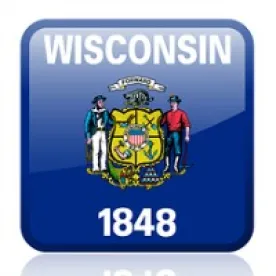WCA filed an Amicus Curie brief in support of Marathon County
On May 16, 2019, the Wisconsin Supreme Court issued its opinion in the Town of Rib Mountain v. Marathon County (2019 WI 50). The Wisconsin Counties Association (WCA) was granted permission to file an Amicus Curiae (or “friend of the court”) brief in the Marathon County case. WCA filed the Amicus Curiae brief because the Marathon County case raised significant concerns for all counties across the state given the potential implications on a county’s ability to establish and maintain a consistent rural naming or numbering system for purposes of aiding in fire protection, emergency response and civil protection. Fortunately, the Wisconsin Supreme Court held that Marathon County (the County) could establish a rural naming or numbering system in any town in a given county, not just in “rural” and unincorporated parts of a county.
In 2016, Marathon County adopted an ordinance (the Numbering Ordinance) to establish and maintain a County-wide address numbering system. The Numbering Ordinance required the County to assign a unique address intended to assist responders in providing fire protection, emergency medical services, law enforcement services, and also meet other locational needs in providing services to the public. The Numbering Ordinance applied to all unincorporated areas of the County, including the Town of Rib Mountain (the Town). The Town objected to its required participation in the County’s addressing system and argued that the County’s statutory authority to implement a county-wide numbering system was restricted to only “rural” unincorporated areas 2 in the County. By adopting a County-wide numbering system via the Numbering Ordinance, the Town argued that the County had exceeded its statutory authority.
The question before the Wisconsin Supreme Court was a straightforward issue of statutory interpretation: Did Wis. Stat. § 59.54(4) and (4m) restrict Marathon County's authority to establish a naming or numbering system to only “rural” areas in the County, or did the County have the statutory authority to implement a county-wide naming/numbering system in towns, regardless of whether a town was deemed “rural.” To answer this question, the Wisconsin Supreme Court looked to the specific language of Wis. Stat. § 59.54(4) and (4m) and found that the term “rural” does not set forth a locational limitation on the County’s authority. Rather, the Court held that the word “rural” in Wis. Stat. § 59.54(4) and (4m) describes the actual naming/ numbering system, not a “territorial constraint on the establishment of naming or numbering systems, limiting them to only rural towns or rural portions of towns.” As such, the County’s statutory authority to implement a County-wide numbering system was not restricted to only “rural” areas, but the numbering system may apply to all unincorporated areas of the County, including in the Town of Rib Mountain.
The Court also discussed the difficulty that would result if it accepted the Town’s interpretation of Wis. Stat. § 59.54, and thereby limiting a county’s ability to implement a numbering system in only “rural” unincorporated areas. First, the Court looked to the numerous different ways “rural” may be interpreted, and as a result, the application would be “unworkable” and undermine the fundamental purpose of § 59.54 of allowing counties to establish naming or numbering systems to aid in fire protection, emergency services, and civil defense. Second, the Court analyzed the difficulty created by a county having to make a factual determination of which 3 areas would be deemed “rural.” This fact-intensive determination, coupled with the numerous definitions and interpretations of the term “rural,” could result in Wis. Stat. § 59.54’s application varying from county to county and town to town, and even within a single town because only the rural portions of that town would participate in the numbering system. These variations indeed undermine the public purpose and intent of intent of Wis. Stat. § 59.54: to allow counties to establish naming or numbering systems to aid in providing in fire protection, emergency services, and civil defense.



 />i
/>i

